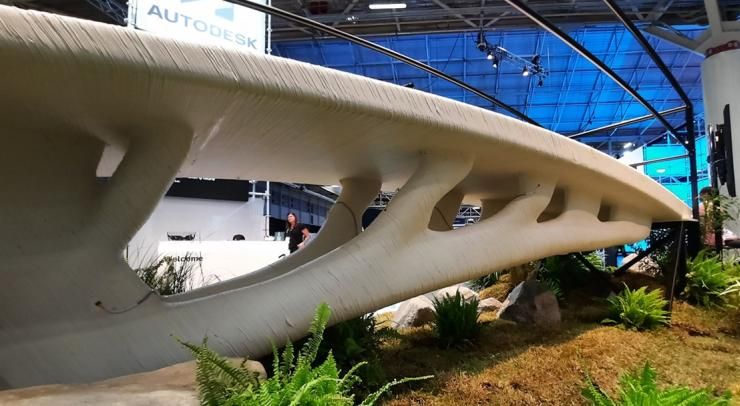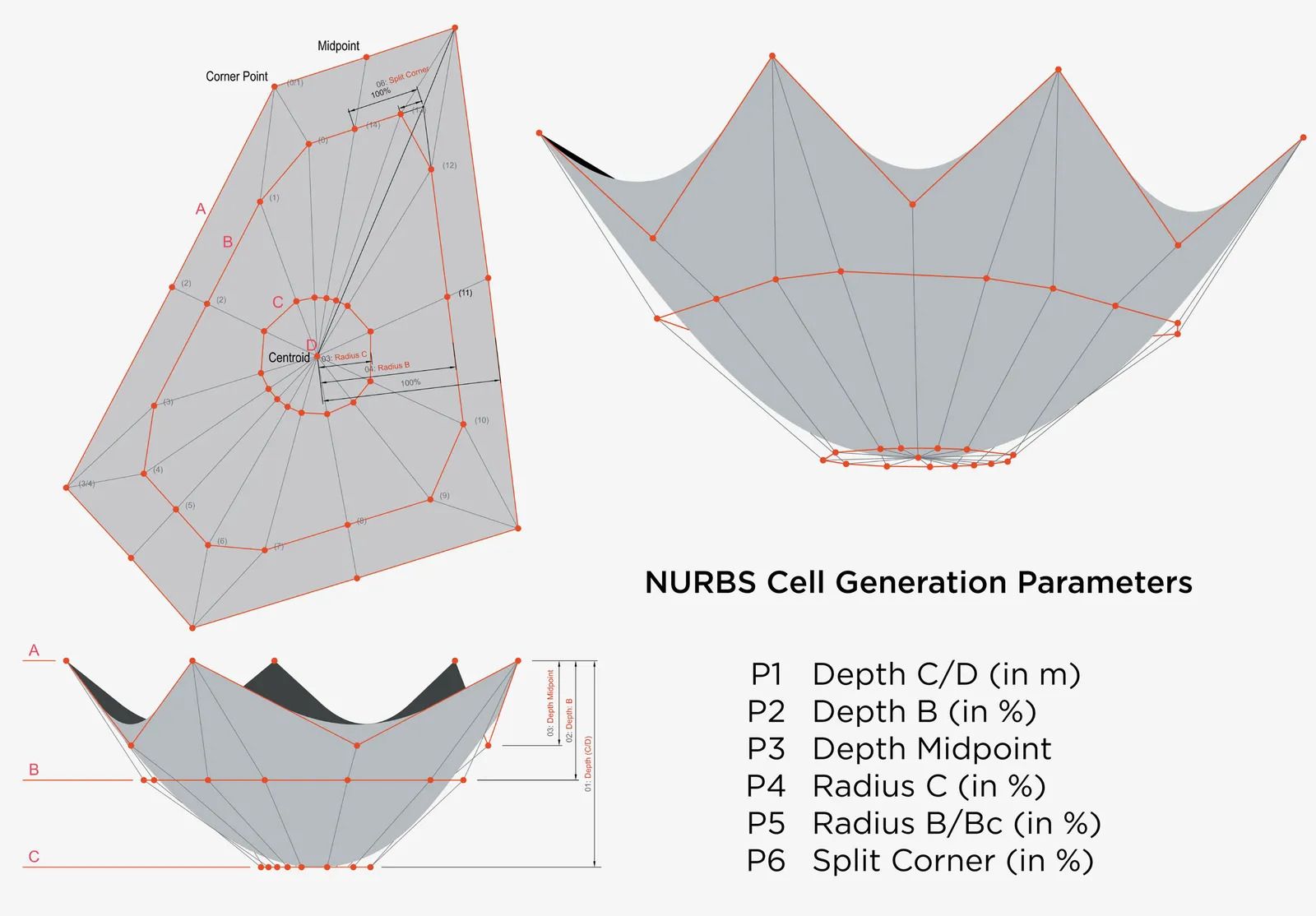How Generative AI Design Revolutionizing Architecture in the Virtual World
The architectural industry has always been about stretching the boundaries of what's possible with current technology.
Take recent years, for instance – VR tech and other cool innovations have been turning heads. The whole immersive and interactive experience has really changed the game for architects, from visualizing designs to sharing ideas with clients and team members.
The industry is gearing up for another massive shake-up, as AI-generated architecture bursts onto the scene and challenges the way things have been done.
Generative AI design is unlocking a whole new world of possibilities, ramping up creativity and efficiency not just in architecture and real estate, but across countless other industries too.
So let's dive into the ins and outs of AI-generated architecture – what it is, its application in the digital universe, where it is now, some of its limitations and challenges, and what the road ahead looks like.
What is generative AI?
Generative AI is a sort of artificial intelligence that creates new content, designs, or patterns on its own. You may have come across remarkably impressive AI-generated artwork making the rounds on the internet, or the now ubiquitous ChatGPT, which has hogged the spotlight for quite a while now.
There are numerous examples in different industries, everything from art and design to drug discovery and molecular design. A notable development is how, in just 18 months, Alphabet’s DeepMind predicted the structure of nearly all proteins known to science, paving the way for quicker medication development.
In architecture, generative AI can be used to produce innovative unique concepts based on predefined inputs and design criteria
In just one hypothetical example, given data on local temperature, site restrictions, engineers can use AI architecture design to develop energy-efficient building designs with optimal levels of natural light and ventilation.
What generative AI design means for cyberspace architecture
One thing that is beyond doubt is that the future of architecture in the digital domain will be greatly influenced by generative AI design.
Experts in different fields, including architects, can already achieve unparalleled levels of creativity, efficiency, and adaptability by adding artificial intelligence into their design process.
Going forwards, experts will be able to generate a wide range of design choices by quickly churning out different iterations, allowing them to experiment with new forms, materials, and structural systems to create visually appealing and highly functional structures..
In addition, they will be able to take advantage of AI's ability to study and learn from existing data and design solutions with a variety of parameters in mind. Things such as energy efficiency, user experience, and construction cost.
For example, generative AI could optimize a hospital's layout to increase patient flow and reduce the spread of infections, and thus improve operational efficiency and patient care.
The power of this new tech is already mind-boggling, and as the enthusiasts are all too keen to remind us, this is just the beginning.
The state of simulated reality architecture with generative design
The application of generative AI design in digital domain architecture has already begun to show promise.
The online space is literally teeming with companies and tools competing to prove how their software and solutions can whip up engaging, one-of-a-kind designs. They usually claim they'll boost your efficiency and slash design time and costs big time.
But architects are already using the tech in a big way, experimenting with innovative design concepts, optimizing spaces to cater to user needs, and expressing their architectural creativity more freely with unique and sophisticated designs.
Here are three examples:
1 Project Discover by Autodesk
Autodesk's new office in Toronto is the first big example of an office space designed using generative techniques. The office, located in the MaRS district of Toronto, demonstrates how AI-generated architecture can be used for creating building layouts. The design of Autodesk's Toronto office took into account employee work styles, resulting in areas tailored to the needs and preferences of the people occupying the space.
2 Bridge Design with Generative AI and 3D Printing
At Autodesk University 2022, Dar and Autodesk Research showcased a 5m-long 3D-printed bridge, using generative design to enhance its shape and build. This innovative project aimed to boost safety, sustainability, and efficiency in the construction sector. The bridge, constructed from recycled materials, features a bone-like internal pattern. Generative design played a key role in determining the ideal exterior shape and internal structure, increasing stiffness while reducing weight.

3 Concert Hall Designed By Algorithms
The Elbphilharmonie concert hall in Hamburg, Germany, designed by Herzog and De Meuron, features a central auditorium with 10,000 unique acoustic panels, created using parametric design algorithms. In collaboration with acoustician Yasuhisa Toyota, an algorithm was developed to produce each panel with a distinct shape and pattern, fulfilling both aesthetic and acoustic requirements. This innovative approach showcases the potential of using AI generated architecture to create functional and visually captivating spaces.
These early efforts offer a glimpse into what the future of Artificial Intelligence architecture might look like, with AI potentially doing most of the design of our environments; picture a futuristic AI-designed public park with organically curved pavilions and elaborate planting patterns inspired by natural ecosystems.
The potential of generative design in the digital realm
Here are a few examples of how artificial intelligence architecture might change the industry:
-
AI-generated architecture already has the ability to explore design possibilities beyond what human imagination is capable of, in a fraction of the time. Architects will be able to iterate and refine designs even more quickly with generative AI design, saving time and resources during the design process
-
As the technology improves, there will be higher-quality AI architecture designs for unique, and aesthetically pleasing spaces. For example, an AI-designed music hall could have an ornate, acoustically optimized ceiling that provides listeners with an immersive experience.
-
This extends to customization and personalization, in which the AI-generated architecture can adapt to individual tastes and demands, generating detailed configurations adapted to the user's needs based on just a few criteria.
Challenges and limitations of generative design in the virtual world
Even with all the amazing potential of generative AI design, there are still some key concerns we need to think about:
-
Ethical considerations
As this tech becomes more widespread, there's growing worry about things like authorship, intellectual property, and responsibility. It's not just about who gets credit and reaps the rewards – financial and otherwise. Let's say an AI-generated design has a structural failure. Who will be held responsible - the architect or the AI developer?
-
Technical constraints
The quality and diversity of training data are at the heart of generative AI design. Data that is insufficient or biased can lead to mediocre or unimaginative designs. If an AI system is only educated on modernist architecture, the results will also be biased.
The uptake of the new tech might have to overcome some friction since it'll mean changing up well-established design workflows and methods. Pros like architects and engineers could be hesitant about AI-generated designs due to concerns about liability, job security, or simply feel that they are losing creative control of their projects.
Conclusion
By enhancing and increasing creative capabilities and improving design efficiency, generative AI design is set to shake up the world of architecture. As Artificial intelligence architecture technology advances, we will see more changes in the way we construct and the experience we get from our surroundings.
But to really tap into AI's potential, the industry needs to embrace a collaborative attitude with the tech.
There should be an effort to integrate artificial intelligence's capabilities with human skills and ingenuity to build innovatively, and sustainably
Addressing issues such as ethical concerns, diversified training data, and changing old ways of doing things is critical for the successful integration of AI in architecture, enabling architects and artificial intelligence to interact, and crafting a built environment that reflects human brilliance and technical development.
about the author








